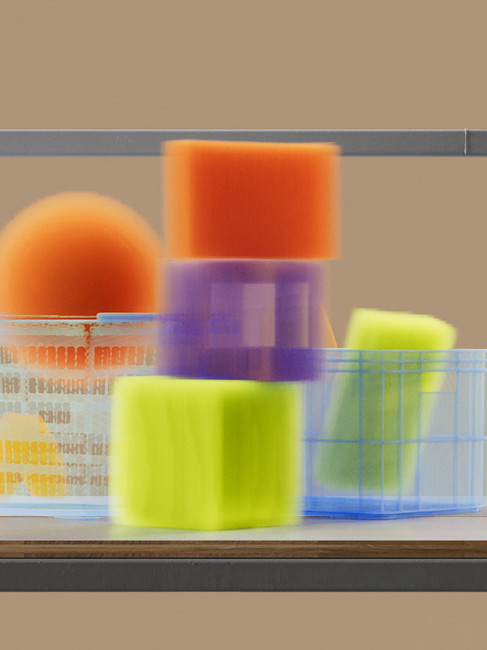#OFFFTalks | Vincent Schwenk
- Yağız Genç
- Apr 17, 2024
- 3 min read

We met with 3D artist Vincent Schwenk, who stands out with his colorful and fluid digital sculptures, at OFFF Barcelona 2024 and had a short conversation.
Interview: Yağız Genç
How does your creative process work when playing with colors, patterns, and shapes? Do you have a frequently repeated ritual while creating an artwork?
I can answer very much to this question. I want to start with the colors first. It's funny because usually I wear all black. I mean, now I have a white T-shirt, but usually it's very muted. I don't have any colored clothes. But when it comes to my work, I say,
Okay, now I can also make a black-and-white render. I start, and it's like, Nah, it looks so boring to me. Somehow, it's really joyful for me and pleasurable to throw the colors into the renderings. Colors are great for creating visual contrast and telling a story. It has an emotion. If something's like super red, it tells you something different than if everything is blue or beige.
So, are colors a starting point that excites you?
Sometimes, I would say that my starting point comes from different origins. I really like to take pictures with my phone. I go around, I see things, and I'm inspired. Like, I don't know what, but I like this texture, and then I take pictures. Sometimes a texture can be a beginning of a visual story. Or sometimes I see something funny. I have photographed many trash bags and trash things but, weirdly, I like it. I don't know why, but it has a nice visual quality. You can look through it, and it's a cool structure. Often, these images are the beginning of the story. Then, the program itself is a bit of a starting point. We have an initial idea. I go into the program, and then the program and I are a bit playing ping pong. I try to find the boundaries of what is technically possible. It's a mix of all these inputs. Colors then mostly come quite at the end. So if everything is done, then I just put on colors and materials.
Harmony of textures is a feature that stands out in your work as much as fluidity. Do you have any background experiences supporting this skill of matching textures?
I think the background comes from photography. When you start to take pictures, you kind of develop your eye. You begin to see a bit differently. You start to notice details. This further developed with studying design. Where I see things differently and can remember and implement them.
Where do you mostly seek inspiration, in the virtual or physical worlds?
I would say the real world. Walking around in the streets in nature and snapping pictures with the phone. Sometimes I see obviously digital work and I'm quite inspired but I don't want to do this too much. I don't want to copy other people. Sometimes, you see something and have it somehow in the back of your head. Then you do something on your own. Subconsciously, you copy someone else. Everyone is probably doing this, but that's why I enjoy taking pictures. I don't make mood boards. I only make mood boards with my phone and being outside.
"I still think that an artist has, or I hope it has, a better inner expression in a story than AI.
That's definitely going to be the most significant conflict in the future."
What trends do you think will shape the future of the digital art, CGI, and animation industry?
That's a super difficult question. I get it asked a lot. Like how could the future be?
With the current development of AI, it is tough to predict anything because
Technology is progressing so quickly that I don't know how AI will change our jobs, but I'm sure it will change it. If it's the best way, it's just a tool that I can use to express my visual ideas. In the worst case, it's like it's going to take away many jobs.
I was just actually curious about your gut feeling about this situation. Not just future prediction.
I also think it's going to be more important to be an actual human. So I think to communicate, it might be more important to show your real face and your real struggles and show that you are a real person and not just "just an AI shooting" out images like crazy.
























































